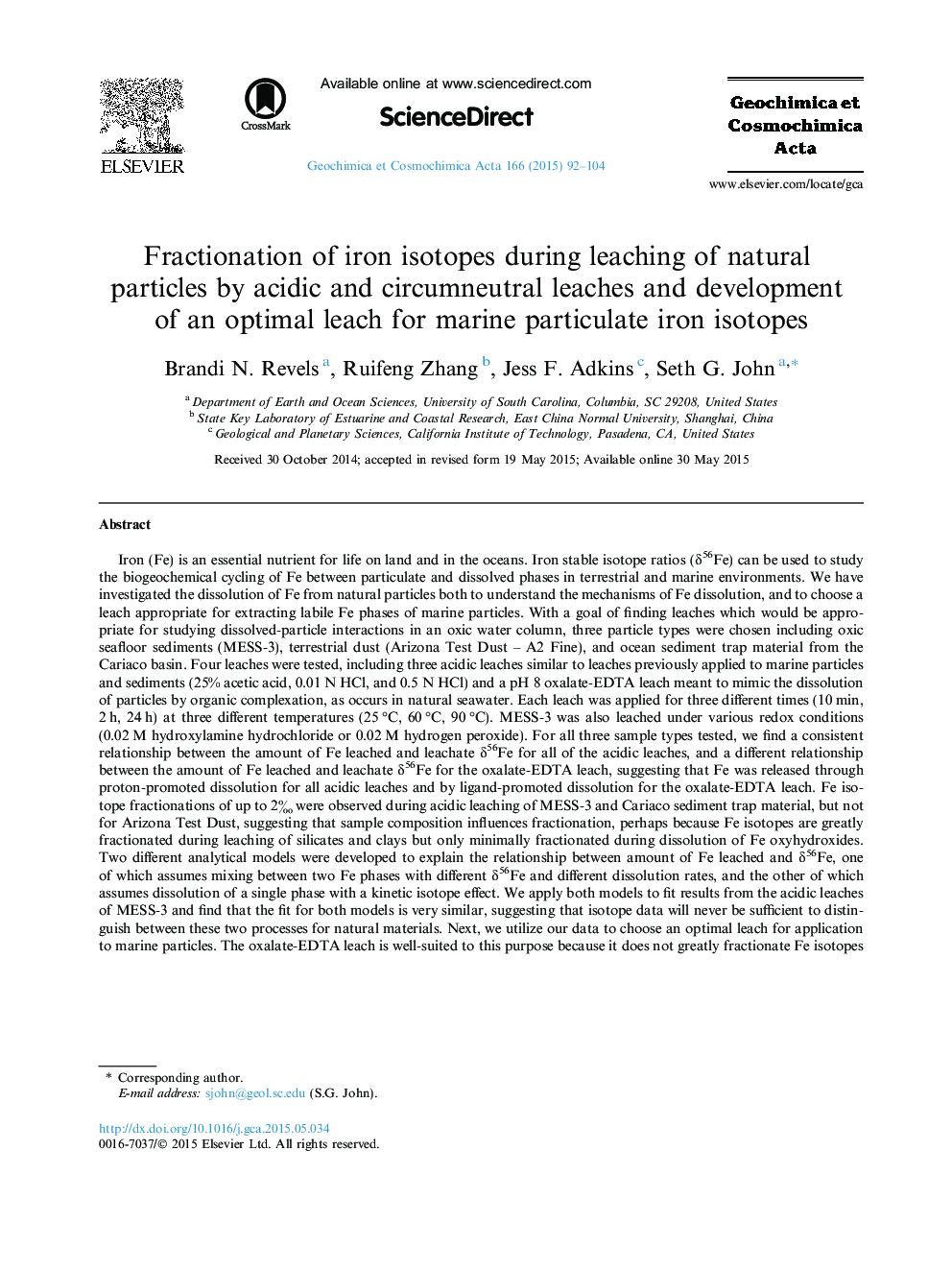| Article ID | Journal | Published Year | Pages | File Type |
|---|---|---|---|---|
| 6437803 | Geochimica et Cosmochimica Acta | 2015 | 13 Pages |
Abstract
Iron (Fe) is an essential nutrient for life on land and in the oceans. Iron stable isotope ratios (δ56Fe) can be used to study the biogeochemical cycling of Fe between particulate and dissolved phases in terrestrial and marine environments. We have investigated the dissolution of Fe from natural particles both to understand the mechanisms of Fe dissolution, and to choose a leach appropriate for extracting labile Fe phases of marine particles. With a goal of finding leaches which would be appropriate for studying dissolved-particle interactions in an oxic water column, three particle types were chosen including oxic seafloor sediments (MESS-3), terrestrial dust (Arizona Test Dust - A2 Fine), and ocean sediment trap material from the Cariaco basin. Four leaches were tested, including three acidic leaches similar to leaches previously applied to marine particles and sediments (25% acetic acid, 0.01 N HCl, and 0.5 N HCl) and a pH 8 oxalate-EDTA leach meant to mimic the dissolution of particles by organic complexation, as occurs in natural seawater. Each leach was applied for three different times (10 min, 2 h, 24 h) at three different temperatures (25 °C, 60 °C, 90 °C). MESS-3 was also leached under various redox conditions (0.02 M hydroxylamine hydrochloride or 0.02 M hydrogen peroxide). For all three sample types tested, we find a consistent relationship between the amount of Fe leached and leachate δ56Fe for all of the acidic leaches, and a different relationship between the amount of Fe leached and leachate δ56Fe for the oxalate-EDTA leach, suggesting that Fe was released through proton-promoted dissolution for all acidic leaches and by ligand-promoted dissolution for the oxalate-EDTA leach. Fe isotope fractionations of up to 2â° were observed during acidic leaching of MESS-3 and Cariaco sediment trap material, but not for Arizona Test Dust, suggesting that sample composition influences fractionation, perhaps because Fe isotopes are greatly fractionated during leaching of silicates and clays but only minimally fractionated during dissolution of Fe oxyhydroxides. Two different analytical models were developed to explain the relationship between amount of Fe leached and δ56Fe, one of which assumes mixing between two Fe phases with different δ56Fe and different dissolution rates, and the other of which assumes dissolution of a single phase with a kinetic isotope effect. We apply both models to fit results from the acidic leaches of MESS-3 and find that the fit for both models is very similar, suggesting that isotope data will never be sufficient to distinguish between these two processes for natural materials. Next, we utilize our data to choose an optimal leach for application to marine particles. The oxalate-EDTA leach is well-suited to this purpose because it does not greatly fractionate Fe isotopes for a diversity of particle types over a wide variety of leaching conditions, and because it approximates the conditions by which particulate Fe dissolves in the oceans. We recommend a 2 h leach at 90 °C with 0.1 M oxalate and 0.05 M EDTA at pH 8 to measure labile “ligand-leachable” particulate δ56Fe on natural marine materials with a range of compositions.
Related Topics
Physical Sciences and Engineering
Earth and Planetary Sciences
Geochemistry and Petrology
Authors
Brandi N. Revels, Ruifeng Zhang, Jess F. Adkins, Seth G. John,
